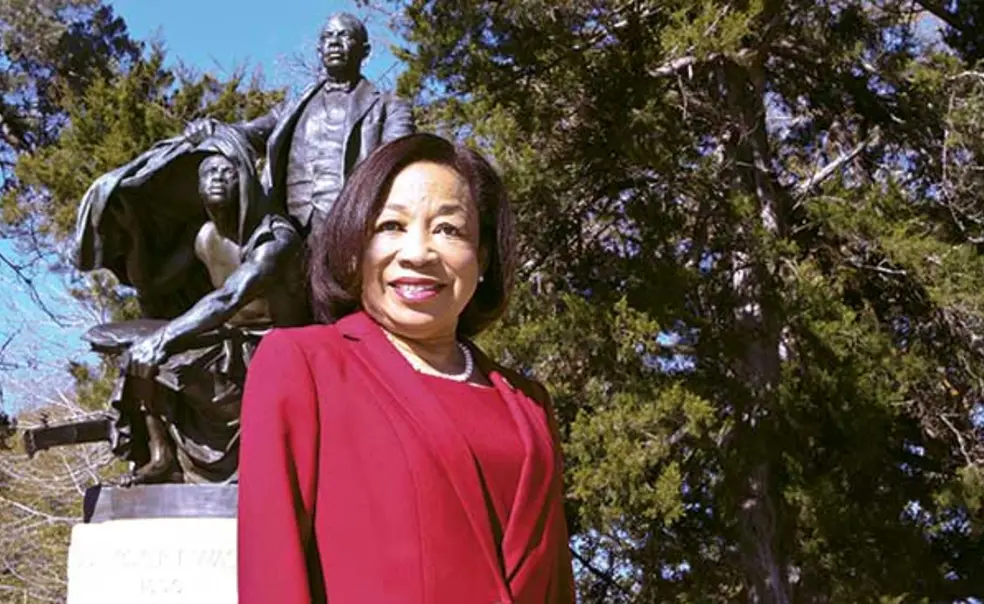Lily McNair ’79: The Trailblazer
Tuskegee’s first female president seeks excellence through mentorship, accountability, and amity
Lily McNair ’79 is comfortable being first. She was the first in her family to go to college and among the first African American women to attend Princeton, just six years after the university became coed.
McNair, a clinical psychologist, became the first tenured African American woman in the Department of Psychology at the University of Georgia in 1999. And last summer, she became the first female president of Tuskegee University.
In addition to hard work, dedication, and luck, these milestones required mentors, says McNair. Unlike many of her black friends at other schools, McNair had a high school guidance counselor who encouraged her, a first-generation student with scant financial resources, to apply to the Ivy League university she’d dreamed of attending since age 8.
“I had guidance counselors who believed in me,” she says. McNair’s upbringing in a working-class family in Browns Mills, N.J., and her public-school background have deeply influenced her philosophy on higher-education leadership. She’s the eldest of four children and the daughter of a Japanese seamstress and an African American veteran who worked as a payroll clerk after serving in the Korean War; neither went to college.
McNair qualified for a substantial scholarship to Princeton, but upon arriving in 1975, she recalls being woefully underprepared for freshman calculus. In some of her smaller classes she was often the only woman or the only African American. “It bothered me to the extent that there were times I wondered if the professors really saw me as a person,” McNair says.
Today at Tuskegee — a historically black institution where 93 percent of students are African American — one of McNair’s top priorities is expanding mentoring opportunities and hands-on career training. It’s part of a broader effort to raise student retention and graduation rates.
This year, the school is piloting a mentoring program that pairs freshmen with faculty advisers who lead conversations about students’ skills, strengths, and how they might integrate their academic and co-curricular activities with their career plans. Previously, students worked with academic advisers from freshman to senior year, but the advising wasn’t always consistent for all students, McNair says.
“There is what we call ‘intrusive advising,’ where your professor sends you an email saying ‘I missed you in class, what’s going on? Come and see me,’” she says of a policy that’s long been in place, which she plans to enforce more rigorously.
That individual attention is especially important given that, on average, college-matriculated African Americans reach graduation at far lower rates than their white, Hispanic, and Asian peers, according to a 2017 report by The Education Trust. And students of any race whose parents did not finish college are also less likely to complete college themselves, National Center for Education Statistics data show.
McNair says faculty and staff at Tuskegee strive to create “a sense of belonging and family” meant to make students feel seen and heard.
“At historically black colleges and universities, the mantra of the culture is: ‘We are here for you. We are here to help you to be successful. We have high expectations of you,’ ” McNair says. “What’s different at a predominately white institution is that there isn’t necessarily that focus and that confidence in the success of students of color.”












No responses yet